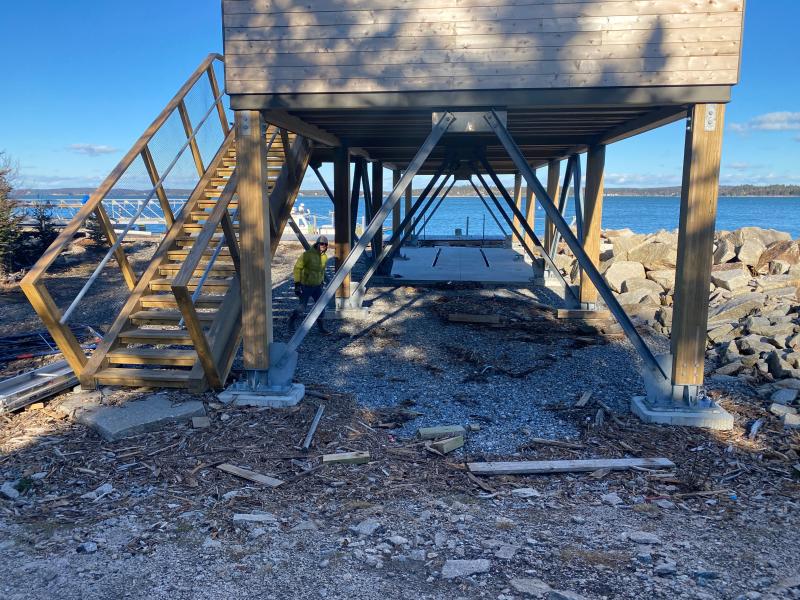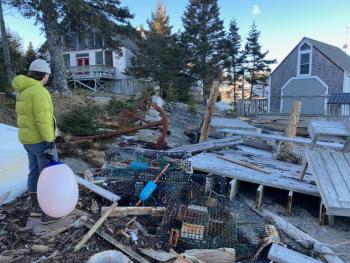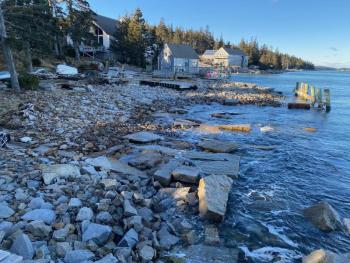The sustainable island campus of Hurricane Island, just a 10 minute skiff ride from Vinalhaven and 11 miles from Rockland, has weathered the latest round of damaging winter storms and flooding.
As relayed by friends on the water, the living laboratory of Hurricane Island Center for Science and Leadership is standing tall. While the island did not escape unscathed, no major damage was sustained to the main campus. This is a victory for the newly-built Hurricane Island Field Research Station being readied for operation in June.
An example of what sustainable construction looks like for the future, the base of the station sits 11 feet above the mean high tide line (the 100 year flood plane) per FEMA building regulations and thus was mandated to be built on vertical supports.
Belfast-based OPAL designed the building, which showcases new and innovative sustainable forestry products, including cross laminated timber panels for the main structural component, as well as wood fiber insulation. The durable, all-wood structure that supports the building was designed specifically to resist storm and flood damage. This design approach makes for a resilient structure that will last for years to come as the climate changes along the coast of Maine.
The station needs to be on Hurricane Island’s waterfront in order to plumb flowing seawater into the building, allowing living marine organisms to remain alive in the controlled environment of the laboratory, which will be utilized by the organization’s professional research staff.
The station was part of the strategic plan for Hurricane Island Center for Science and Leadership and the shell of the building was completed last summer, with a ribbon cutting attended by Governor Janet Mills and Congresswoman Chellie Pingree, as well local representatives Valli Geiger, Anne Matlack and state Senator Pinny Beebe-Center. UMaine marine scientists Bob Steneck and Rick Wahle were in attendance, along with board members and fundraisers close to the nonprofit.
Storm casualties to the island did occur with major erosion along some of the island's stone paths and wooden piers; piers which were recently repaired from the December 2022 storm, and which washed inland with the storm surge.
“These recent storms build on the urgency we have as a society to better understand our changing climate so we can identify responses and solutions,” said Hurricane Island Center for Science and Leadership Executive Director Bo Hoppin, in a news release.
Hurricane Island values sustainability, and being disconnected from mainland or island power the campus is powered by it’s own solar micro-grid, with filtered freshwater supplied on site from the century-old former granite quarry that has become a freshwater reservoir, and food and human waste is composted among other sustainability measures in place among staff, students and visitors to the island.
“The newly constructed Hurricane Island Field Research Station is a model for climate resilience,” said Bo Hoppin. “It is also strategically located to investigate the changing patterns across the Gulf of Maine ecosystem as we experience the effects of global climate change.”
Hurricane Island Center for Science and Leadership is currently enrolling middle and high school students for the 2024 summer season of field research programs with financial aid available for qualifying families.
This coming summer, the station will begin serving scientists and higher education students as a resource in the heart of Penobscot Bay. For more information about programs and research visit hurricaneisland.net, email info@hurricaneisland.net, or call 207-867-6050




























